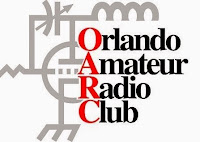CQ magazine has announced the induction of two new members to the CQ Contest
Hall of Fame, which honors those contesters who not only excel in personal
performance but who also "give back" to the hobby in outstanding
ways. CQ World Wide DX Contest Director and former CQ Contesting Editor John Dorr, K1AR, presented Hall of Fame
plaques at an induction ceremony held at the annual Dayton contest dinner on
May 21.
The 2022
inductees to the CQ Contest Hall of Fame are:
 |
2022 CQ Contest Hall of Fame
inductees Craig Thompson, K9CT
(L) and Dave Pascoe, KM3T (R).
(Photo by Tom Roscoe, K8CX)
|
David
Pascoe, KM3T, a highly-accomplished
multi-op and single-op contester with many championships and record scores to
his credit, and he is also responsible for much of the "back office"
infrastructure behind the administration of many major contests. He is the infrastruc-ture
and IT security "departments" for all of the contests supported by
the World Wide Radio Operators Foundation (WWROF), including all CQ contests, several
ARRL contests and others. He also maintains the e-mail lists on the
contesting.com system, including CQ-Contest, 3830 and more. He is also a pioneer
in live contest audio streaming, and is a volunteer pilot for two organizations
that provide free medical-related air travel.
Craig Thompson, K9CT, a world-class contester
and promoter of youth in contesting. He developed the North American Collegiate
Championship (NACC) program, in which college amateur radio clubs compete against
each other in the context of the larger competition of the North American QSO
Party. Craig also worked closely with Tim Duffy, K3LR, to develop a version of
the Contest University (CTU) program specifically designed to integrate with each
year's W9DXCC Convention. He is also involved in several amateur radio
organizations, serving as treasurer of CWops, a board member of the Northern
California DX Foundation (NCDXF), past president of the Society of Midwest
Contesters and is currently chairman of the ARRL Contest Advisory Committee.
The CQ Contest Hall of Fame was
established in 1986 to recognize those amateurs who have made major
contributions to the art of radio contesting. This is the 39th annual induction.
CQ DX Hall of Fame
There were no inductees to the
CQ DX Hall of Fame for 2022, as the judging committee determined that none of
the nominees met the high standard required for selection.
CQ Amateur Radio Hall of Fame
The CQ Amateur
Radio Hall of Fame honors those individuals, whether licensed hams or not, who
have made significant contributions to amateur radio; and those amateurs who
have made significant contributions either to amateur radio, to their professional
careers or to some other aspect of life on our planet. The 2022 inductees
(listed alphabetically) are:
Franklin P. Antonio, N6NKF
(SK), co-founder of
Qualcomm, whose chips underlie much of our modern technology. Antonio was particularly
involved in the company's satellite work and was a philanthropist as well,
donating $30 million to the University of California at San Diego as seed money
for a new engineering building.
Wolf Harranth, OE1WHC/OE3WHC
(SK), journalist and
broadcaster on Radio Austria International; founder of Austria's radio
documentary archive (DokuFunk), now the world's largest archive on the history
of radio, including the YASME/Colvin collection; literary translator and 2017
recipient of the IARU Region 1 Roy Stevens memorial award for his work on
DokuFunk.
Les Kramer, WA3SGZ, inventor of lower-limb prosthetic
devices used by some 3000 people worldwide, including two survivors of the
Boston Marathon bombing; as well as multiple other inventions in the fields of
electric power generation, IED detection, optical coatings for industrial
processes and more.
Roy Lewallan, W7EL, author of EZNEC antenna modeling
software that has become the standard platform for designing and modifying amateur
radio antennas.
Peter Marks, AB3XC, physician and FDA scientist behind "Operation Warp
Speed." Dr. Marks leads the team at FDA that reviewed and approved all of
the available vaccines for COVID-19 as well as all intravenous therapeutics
such as Convalescent Plasma, Monoclonal antibodies and diagnostic testing.
Bob Ringwald, K6YBV (SK), well-known blind jazz musician in
Sacramento; co-founder of the Sacramento Jazz Festival; known locally as
"the emperor of jazz" and, last but not least, father of actress and
singer Molly Ringwald.
R. Scott Wright, K0MD, physician and leader of Mayo Clinic team
developing the use of convalescent plasma as one of the first treatments for
Covid-19; DXer, contester, former editor of the National Contest Journal.













